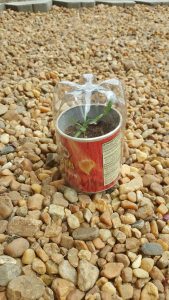Your greenhouse is a great way to grow a variety of plants, flowers, and vegetables all year long. In the winter, however, it’s necessary to take the proper precautions to ensure all your crops are warm enough to survive. The good news is that it doesn’t take much money or work to insulate your greenhouse in the middle of winter.
Save Your Bubble Wrap
If you purchased anything online or had to wrap up your own packages, you probably have some leftover bubble wrap laying around your house. Consider recycling this bubble wrap inside your greenhouse. This heavy-duty plastic is the perfect insulation for the walls and roof of your greenhouse.
To install the bubble wrap, simply adhere it to the trim with greenhouse clips. If you have a wooden frame, the plastic can be stapled in place. While larger bubbles work the best, any size can be used. This extra layer of insulation is sure to keep your plants warm but be aware that it will also reduce the amount of sunlight that enters your greenhouse. Consider leaving the wall that receives the most sunlight uncovered.
Leave the Snow
A blanket of snow covering your greenhouse is nature’s best insulation. Even though snow is inherently cold, large quantities covering the roof of your greenhouse will prevent hot air from escaping. If the snow is blocking too much sun, knock just enough off to let more sunlight inside.
Be aware, however, that too much snow can damage your greenhouse. During an extreme snowstorm, a heavy amount of snow may collect on the roof. If you notice the frame bowing or bending, you need to remove some snow to prevent a roof collapse.
Warm Nights
Temperatures drop the lowest once the sun goes down. This is when your plants become the most vulnerable to freezing. Take advantage of the heat produced during the day and try to save it for the evening. Cover your crops with warm blankets and fleece. If the blankets are too heavy, they can be suspended over the plants.
Consider installing thermal foil on the roof of your greenhouse. Foil holds heat in, and it also prevents the cold temperatures outside from penetrating through the glass. During the day, however, these insulation measures should be removed to allow sunlight back inside.
Cut Plastic Bottles in Half
If you are getting ready to put old plastic bottles in the garbage, consider reusing them for your plants. Plastic bottles can be cut in half and placed on top of your smaller plants. Other clear plastic containers will also work. This type of insulation still allows the plant to get sunlight so they can be left on both day and night.

Insulate Pots
Potted plants are vulnerable to freezing roots, and pots are known for cracking under freezing temperatures. Wrap any pots with bubble wrap and newspaper to help retain warmth. This will also keep plant roots warm as well.
Polystyrene boxes also make great insulation. Place any at-risk plants and seedlings into these boxes during the coldest months. Multiple layers can be added if temperatures drop even more.
With a bit of planning, it’s possible to keep all your plants alive during winter seasons. A properly insulated greenhouse will ensure your plants are able to grow and thrive even under adverse weather conditions.
Be sure to monitor the progress of your plants daily, to make sure they’re staying warm enough and receiving enough sunlight every day. Do get advice from experienced gardeners and find a reliable local tradesman if stuck.

